Day 2 of a 3-day Winter & Owls Tour. The weather was much kinder to us today – there were even some nice spells of winter sunshine! The winds were much lighter and there were only one or two very light and brief showers. We spent the day down in the Norfolk Broads.
As we came in from Horning, through Ludham village this morning, we decided to have a quick look for some swans first. We drove along the road on the south side of Ludham Airfield, but there was no sign of any here today. A Mistle Thrush flew over. We cut back through the village and down to St Benet’s Abbey, where we found several Mute Swans and then a small group of wild swans asleep on the flooded grassland behind the trees. The verges were very soft after all the rain, so we turned round and parked in a gateway which had a more solid base. Several Greenfinches were perched on a bush out on the grass in front as we got out of the minibus.
We walked back up the road and set up the scope on the swans. They were showing no real sign of stirring – occasionally one would lift its head and the only ones we could see here were Whooper Swans, the commoner of the two species here, so we would have to try elsewhere to find some Bewick’s Swans. We heard distant Cranes bugling briefly, but then they went quiet.
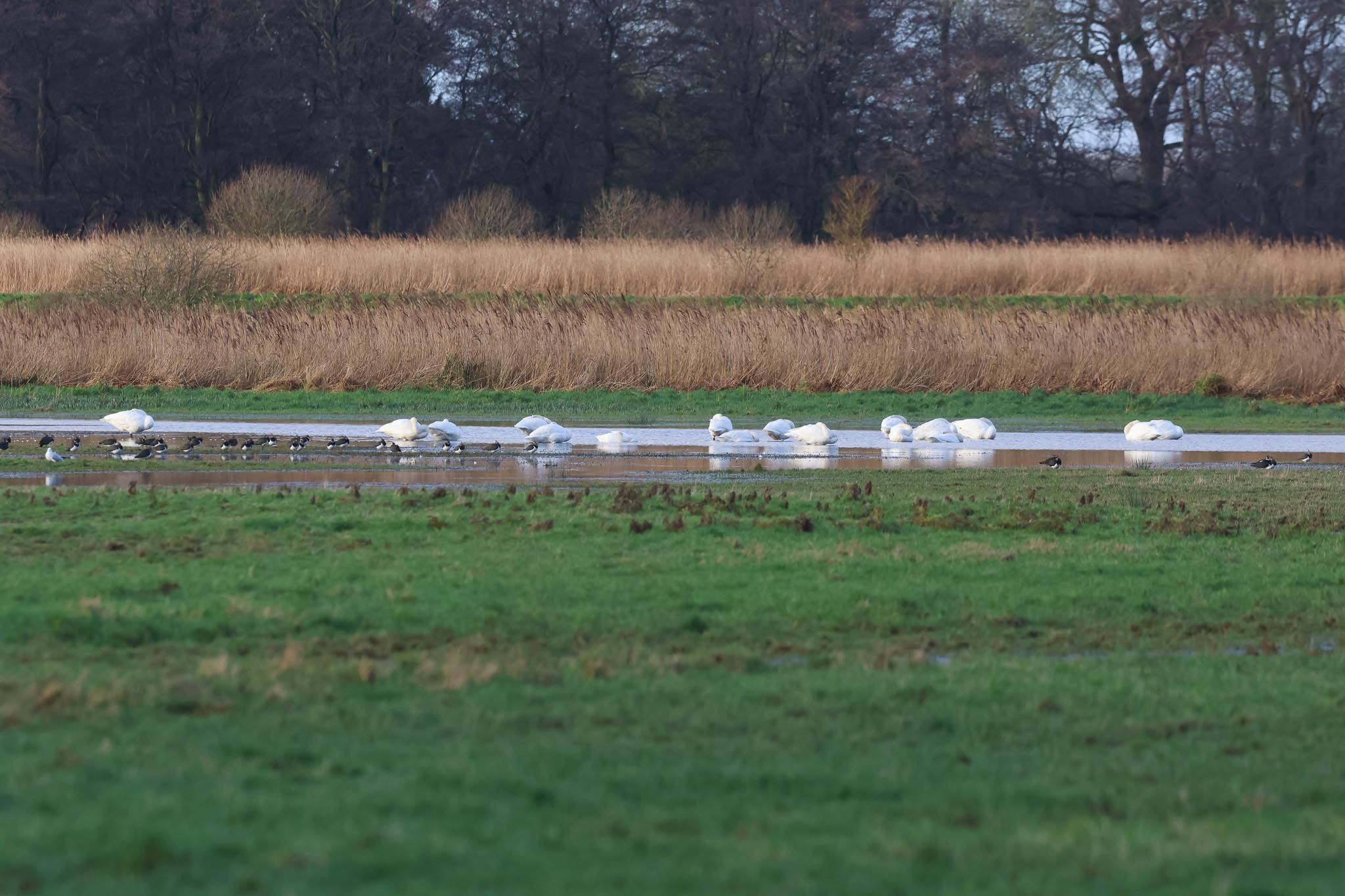
Our next destination was Filby Broad, and at least one Ferruginous Duck had already been reported here this morning. There were several cars in the car park, but only two other birders on the boardwalk. We set up our scopes and quickly located a drake Ferruginous Duck towards the NW corner. Then we realised the female was here too, asleep nearby. We watched the male diving, noting its white eye and distinctive head shape, although the light meant it was hard to make out much in terms of colour. Then a boat with a couple of fishermen in it motored over towards all the wildfowl, the Coot started to move further back and the ducks followed, disappearing behind the reeds into the far corner out of view.
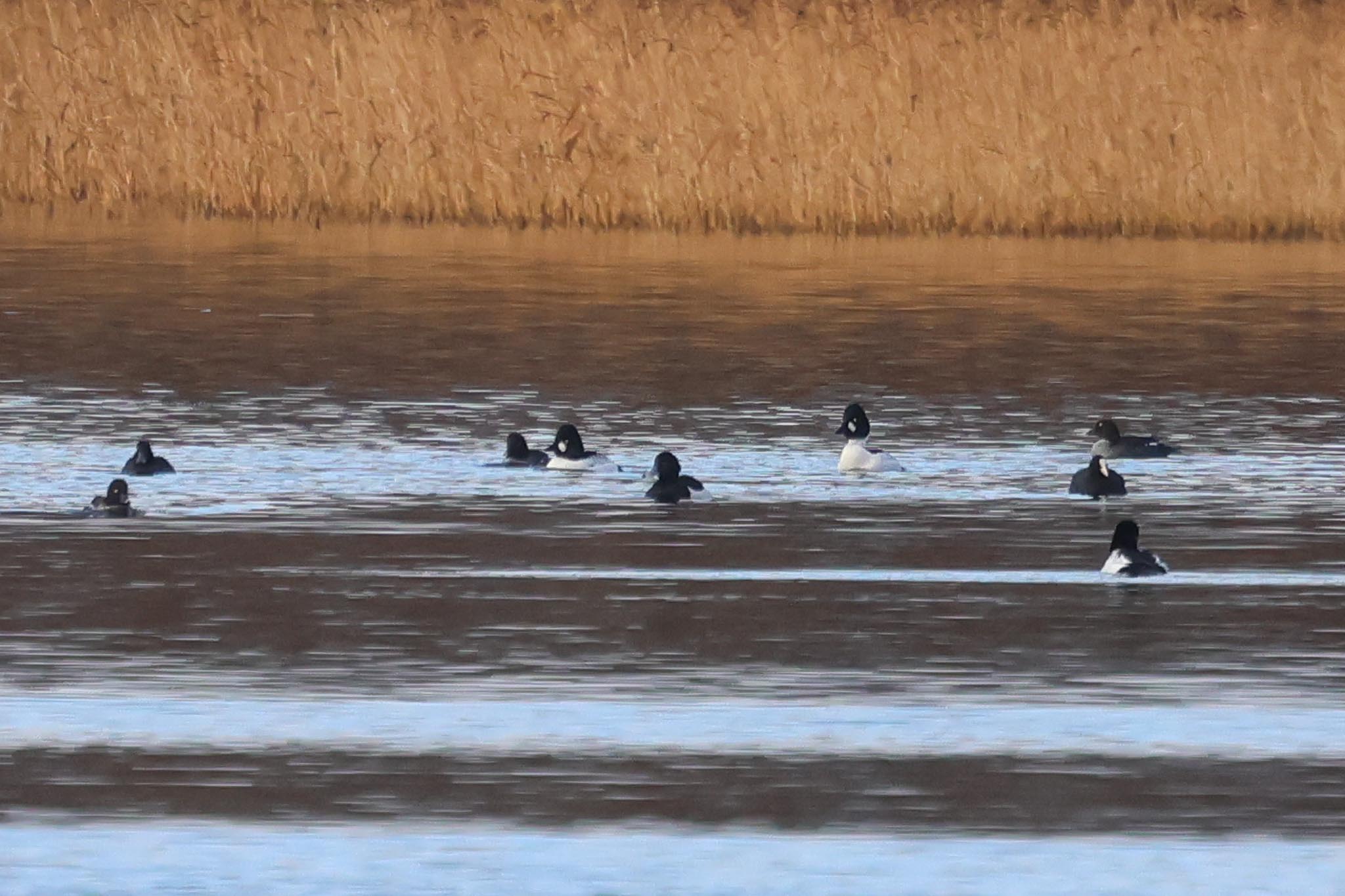
There were still several Goldeneye with the Coot along the edge of the reeds along the north side, so we turned the scopes on those. There were several Gadwall over towards the back, and some small groups of Tufted Ducks and Common Pochard. A couple of Marsh Harriers drifted over. The sun had emerged from behind the clouds now and the light improved. When the Ferruginous Ducks reappeared we could now see their rusty colour, particularly the drake, even though both birds were diving continually.
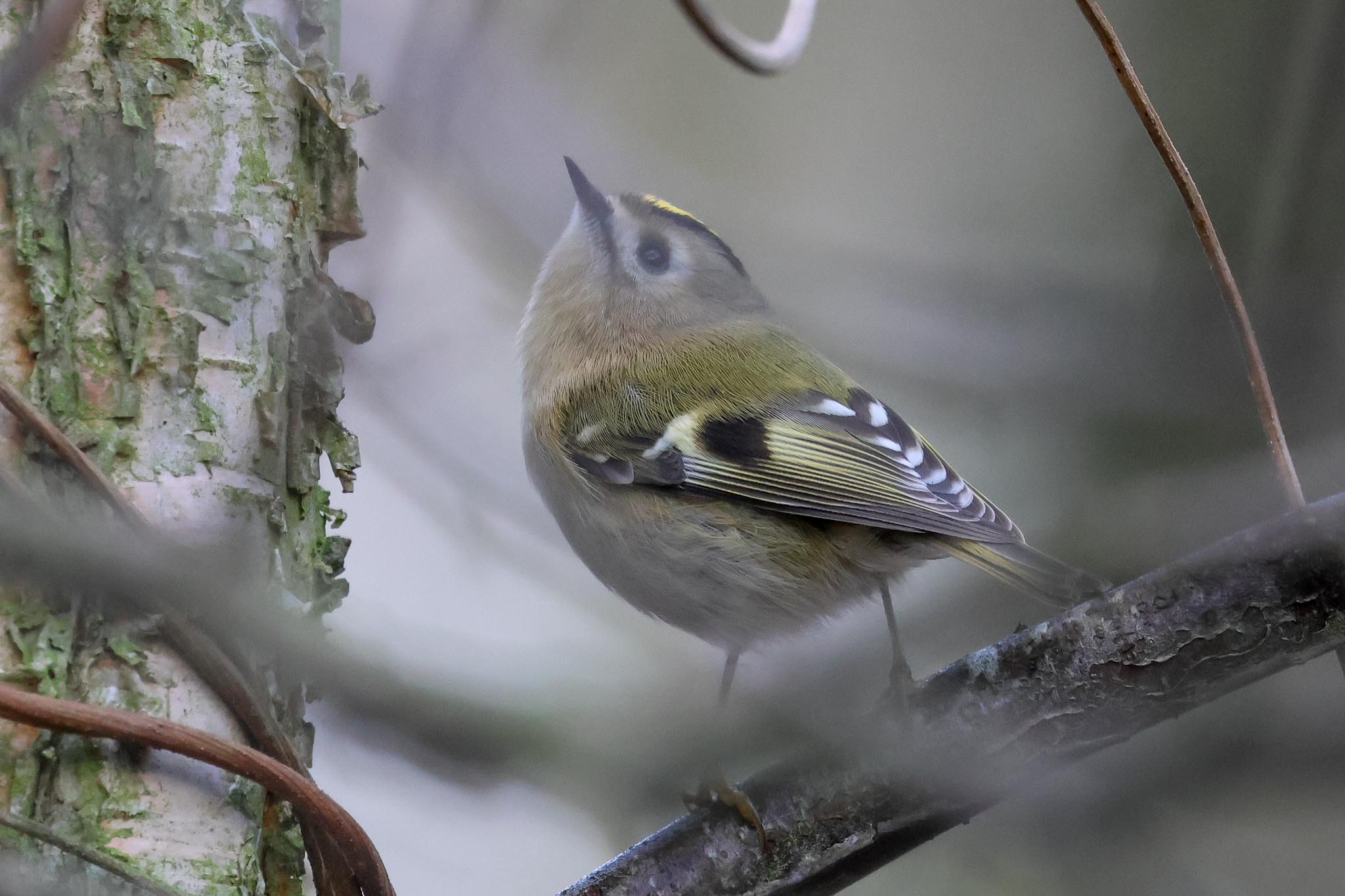
With the main target here achieved, we walked back to the car park and continued on up the path through the trees. A Kingfisher called out over the Broad beyond. A tit flock flitted ahead of us in the trees, including Long-tailed Tits and a Coal Tit singing. Then a Goldcrest appeared close to path, and we watched it feeding in the branches right next to us, just a few feet away. A Treecreeper appeared on a trunk ahead of us too, and we had nice views of that in the sunshine as well.
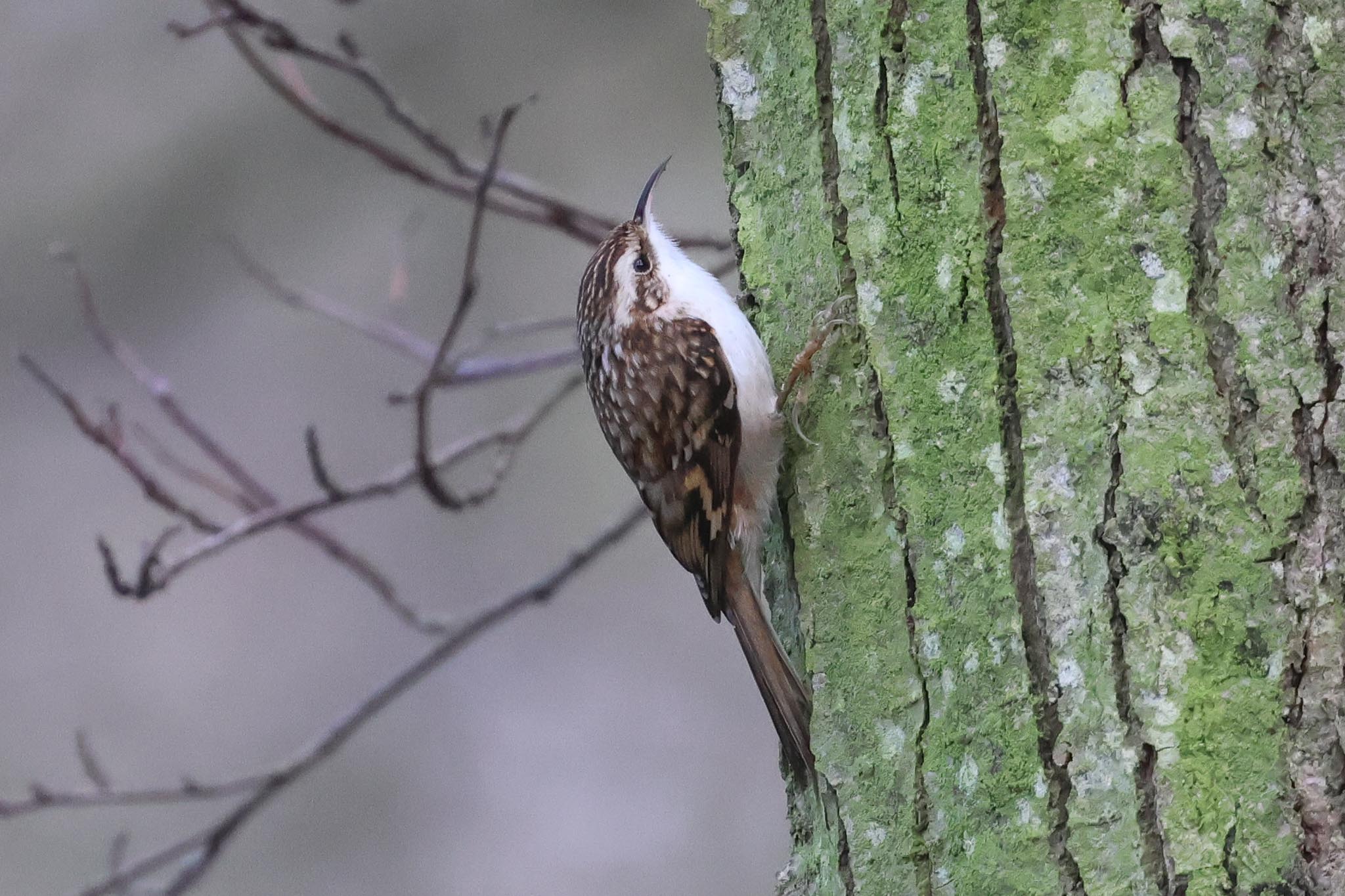
We walked up to the platform at the end overlooking Ormesby Little Broad. A Kingfisher shot past right in front and disappeared round behind the reeds. There was a lot of shooting now over the other side of the broad, spooking the Grey Heron and Cormorants from the trees opposite. Scanning through the ducks and Coot, we found a few Great Crested Grebes, including one already starting to come in to breeding plumage, and two winter ones which looked to be about to start displaying before they were disturbed by all the noise.
Back to the minibus, and drove on to look for Cranes next. Unusually there was no sign of any this morning in their usual fields. We could see shooting pegs, so possibly they had been shooting here this morning too? We tried some other areas nearby where they can often be found but there was no sign of any here either. There were plenty of Red-legged Partridges in the fields – lots were released last year, and they haven’t managed to shoot all of them yet. We decided to try for swans again instead, up at Hickling.
Driving along the road towards Stalham, we came out beyond a hedge and found lots of swans around a small flood in the muddy field right next to the road. They were too close to get out, and started bugling and lifted their heads as we pulled up in a layby opposite. So we drove on, turned round, and stopped in a layby further back now, behind the hedge. The swans had settled down, and started feeding, so we could watch them at leisure now.
We counted six Bewick’s Swans in with about thirty Whooper Swans. It is always great to see them side by side, the Bewick’s Swans clearly smaller, daintier, shorted-billed, with less yellow which is more squared off rather than the wedge on Whooper Swans. With the number of Bewick’s Swans coming to the UK in winter dropping precipitously, it always feels like we should take every available opportunity to appreciate them, while we still can. Two Mute Swans were in with them too.
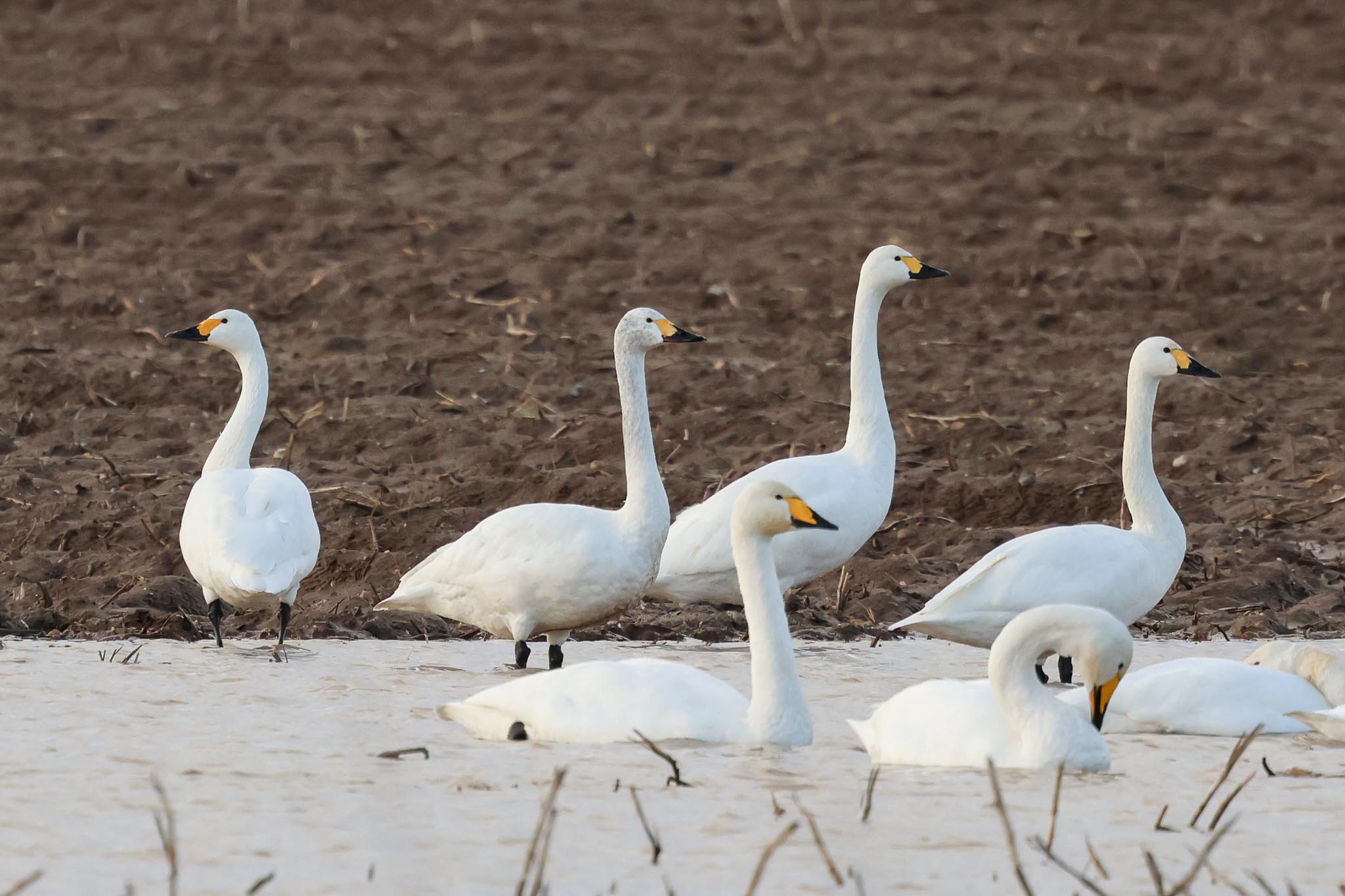
We made our way down to Strumpshaw for lunch next, stopping briefly on the way to admire a big flock of Fieldfares feeding on a recently harvested sugar beet field next to the road. Lots of Blue Tits and Great Tits were coming in to the feeders by Reception, and were joined by a couple of Coal Tits. We didn’t have to wait long before a Marsh Tit shot in and out too, and we had some nice views as it made repeated visits over our lunch break. A Great Spotted Woodpecker stared calling beyond the trees, and we had brief views of one flying over beyond the level crossing, and then another over reception behind us. A Marsh Harrier quartered over the reeds and another drifted over the overflow car park, and a Kestrel perched in the tree right above the level crossing gates.
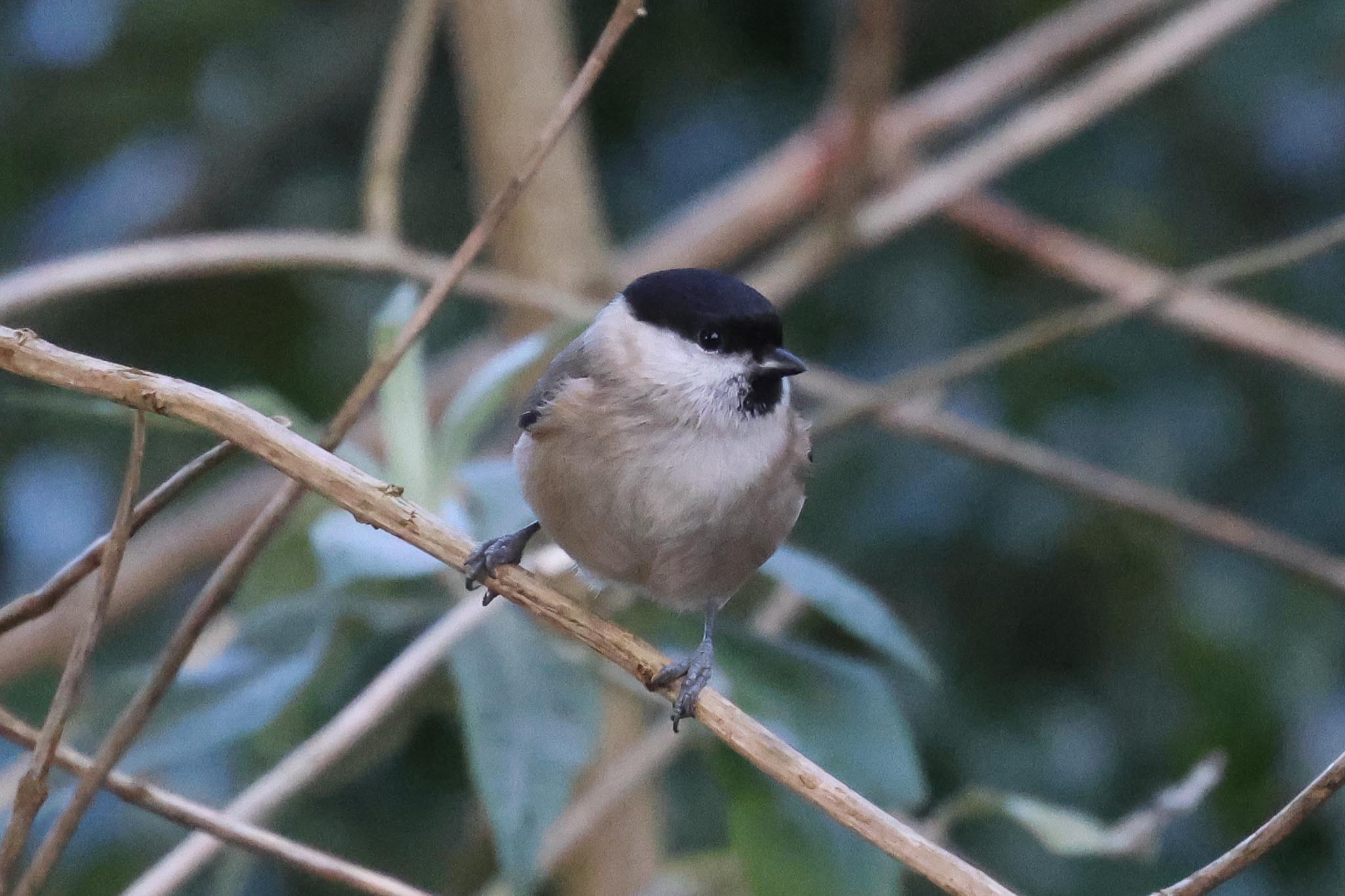
After lunch, we drove back north. On the way, we had a quick scan of the fields where the Cranes should be again from the main road, but there was still no sign of any. There was a very large flock of Rooks along here. We continued on round to St Benet’s Levels which would be our destination for the rest of the afternoon.
As we drove in, we saw a Short-eared Owl flying around just behind the farm buildings, a great start. We parked in the car park beyond, and could see two Short-eared Owls distantly back before the farm now. As we walked out of the car park and onto the access track, a third came in over the field beyond and right past us. It was lovely light now, with the sun out and low in the sky.

Out on the access road, we didn’t know which way to look, there were Short-eared Owls everywhere. we counted five up at once one side of the road, then three up together the other side, so at bare minimum of eight. We had fantastic views of them hunting over the grazing marshes in front of us. The owls dropped into the grass a few times, and one seemed to be feeding on a vole.

From time to time, a couple of Short-eared Owls would chase each other up into the air, and at one point two had a disagreement right in front of us out over the grass. Where there is plenty of food, Short-eared Owls can establish winter territories, and defend them against others. Great to watch.

We heard Cranes bugling now and turned to see a group of three dropping down in distance, lost to view behind the reeds. A little later, we heard more bugling and managed to find what may have been same family out on the Levels, through a gap in the reeds. Distant views, but a good start. Then another sixteen Cranes flew up calling and headed off over Thurne village, followed shortly after by another two. There seemed to be Cranes everywhere too now.
A close male Marsh Harrier was hunting over the grass in front of us too. We could see it was wing tagged, and investigations later revealed it had been ringed in the Broads in June 2020. Several Chinese Water Deer were out on the grass now too.
Eventually it clouded over a little and we managed to tear ourselves away from the spectacular display of the Short-eared Owls. As we walked up to the old Abbey, a Barn Owl was hunting more distantly the other side of the river, unusually the only one we saw here this evening. We scanned the grazing meadows and found the family of three Cranes we had seen earlier, a bit closer from here. Eventually they came up out of the reeds onto the bank, where we could see the darker headed juvenile, born last summer, between the two adults. It was great to hear them calling – it is wonderful sound, bugling Cranes back in the Broads. A Sparrowhawk perched on nearby tower.

Maybe one of the Short-eared Owls we had seen earlier or possibly another was now hunting the marshes beyond the Abbey, and worked its way up the slope towards us. It dropped sharply into the grass and had clearly caught something. A Kestrel had been perched on the hedge just beyond, and after a couple of minutes it flew in low and straight at the Short-eared Owl. The Owl took off with the vole still in its talons, and the Kestrel swooped up at it, grabbed its feet, and the two of them tumbled down locked together into grass. The Short-eared Owl came up with nothing – the Kestrel had successfully stolen its vole.
Another Short-eared Owl appeared perched in the hedge, preening, and we had great views of that now through the scope, before it eventually dozed off, presumably having fed well already. A flock of Linnets landed on the hedge too, and more bizarrely a Common Gull right on the top on a thin branch.
The sun was going down now, and there was a lovely sunset just beyond the old Abbey gate as we walked back down to the car park. It was time to head back – it had been a fantastic way to end a very productive day in the Broads here.
As we arrived back in Hindolveston, and got out of the minibus back at the B&B, a couple of Tawny Owls were hooting in the trees.
















